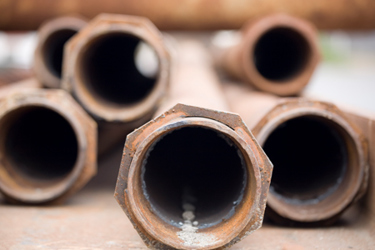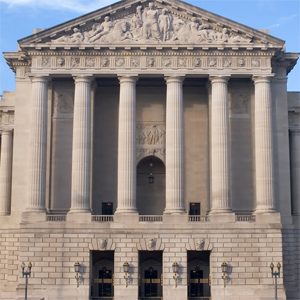Awaiting The Final Lead and Copper Rule Improvements: What Happens Next?
By Brendan O’Brien

From “Revisions” to “Improvements,” the EPA is making further changes to the Lead and Copper Rule to keep drinking water systems working toward the ultimate goal.
Over the past few years, community and public water systems have been focused on meeting the October 2024 deadline of building their service line inventories as directed by the U.S. EPA’s Lead and Copper Rule Revisions (LCRR).
But late last November, the EPA’s highly anticipated Lead and Copper Rule Improvements (LCRI) was released in draft form. Utilities, agencies, and consultants had until February 5, 2024, to submit comments, and the EPA Office of Water is now sifting through those comments and working to release the final LCRI.
So now what happens, and how can water utilities prepare for the final LCRI?
There are many important details that answer this question, but to summarize, LCRR will roll into the LCRI — the next stage of the process in the Lead and Copper Rule regulatory journey. While we understand changes could still be made to LCRI as the EPA reviews public comments, we know that additional requirements are coming and that all community and public water systems will need to comply.
What To Know
Three components in the LCRR will take effect October 16, 2024. Those are as follows:
- Submit an initial service line inventory to your state regulatory agency. The inventory must be available publicly. For water systems serving more than 50,000 people, the inventory must be provided online.
- Within 30 days after submission, provide notification to people served by the water system at the service connections with a lead, galvanized requiring replacement (GRR), or lead status unknown service line. Delivery must be by mail or by another state-approved method.
- Notify all customers within 24 hours following a lead action level exceedance (15 parts per billion).
Once water systems satisfy the LCRR requirements this October, it will be time to plan for the next stage as LCRI comes into play. However, the timing of the final LCRI is still unknown.
The various compliance deadlines in the proposed LCRI stretch out anywhere from three to 10 years after the final rule goes into effect. One of the key pieces to the LCRI is that it will require every community water system to submit a baseline inventory within three years after the final rule becomes effective (expected late 2027), in addition to the service line inventory due this October under LCRR.
The baseline inventory must include the material of the goosenecks or connectors that make up each service line. We advise water systems to begin capturing gooseneck material right away during records review and any field work tasks as they build their initial inventory. In addition, this allows utilities to keep tackling the “lead status unknowns” that end up being submitted within the initial inventory.
Why is this important? Well, the baseline inventory will determine the replacement rate, in which systems will have to remove all lead, GRRs, and unknowns from their systems between 2027 and 2037.
The LCRI intends to push the lead service line replacement (LSLR) plan deadline to late 2027. However, some states may still require it to be submitted in 2024 — so check with your state regulatory agency. The nationwide goal is that all lead service lines (and goosenecks) and GRRs can be replaced at a rate of about 10% per year for 10 years, resulting in total replacement.
 Another major proposed requirement within the LCRI is an improved tap sampling program. Under the LCR and LCRR, systems are required to sample first draw (first liter) from home taps when performing lead and copper sampling. However, the LCRI intends to require systems to collect first- and fifth-liter samples for lead P90 levels. The higher result from the two samples will be used for compliance purposes, and on top of that the LCRI is calling for a reduced lead action level from 15 ppb to 10 ppb. We recommend that utilities begin piloting this process so they can grasp an idea of what their new P90 levels will be when compliance begins in 2027. If there is a concern that your utility will be near the new 10 ppb threshold, you have time now to implement corrosion control measures, where applicable.
Another major proposed requirement within the LCRI is an improved tap sampling program. Under the LCR and LCRR, systems are required to sample first draw (first liter) from home taps when performing lead and copper sampling. However, the LCRI intends to require systems to collect first- and fifth-liter samples for lead P90 levels. The higher result from the two samples will be used for compliance purposes, and on top of that the LCRI is calling for a reduced lead action level from 15 ppb to 10 ppb. We recommend that utilities begin piloting this process so they can grasp an idea of what their new P90 levels will be when compliance begins in 2027. If there is a concern that your utility will be near the new 10 ppb threshold, you have time now to implement corrosion control measures, where applicable.
Additional public outreach and education requirements will also come into play under LCRI. Public outreach materials will be required for daily typical operations, such as potholing activities, meter replacements, and corporation/curb stop or valve turning. Also included is a proposed procedure for sampling results, which should be postmarked within three calendar days, and required information documents related to replacements. Public outreach will also be required for planned or emergency work, meter replacement, and more.
We encourage utilities and public water systems to keep costs and planning for public outreach in mind as they develop their compliance plans.
How To Prepare
While it may feel like 2027 (and beyond) is a long time from now, it’s best for public water systems to remain proactive. So, what can you do to prepare for the changes that LCRI will likely bring?
- Reduce unknowns.
One of the keys to timely, successful service line replacement and compliance with LCRI is to reduce “unknowns.” Any unknowns remaining by the time of submission of the baseline inventory will be included in your replacement target (10% per year). Unknowns will be required to be replaced, so the more data available for a system, the more accurate and cost-effective the LSLR plan can be.
- Discontinue partial replacements.
Once the LCRI compliance date goes into effect, partial service line replacements will no longer be allowed under a LSLR program. The utility is required to make a “reasonable effort” with four attempts using at least two different modes of communication to reach out to customers for a private side replacement. If a customer declines, the utility is not permitted to make a partial replacement of their utility-owned side of the service line. The only exception to this is when there’s an emergency or during planned infrastructure work (such as water main replacement).
- Determine your funding strategy.
According to a recent statement from the American Water Works Association, it’s estimated that replacement of all lead service lines in the U.S. could top $90 billion. The EPA has designated $15 billion from 2022-2026 ($3 billion per year for five years) for lead service line inventory development and lead or GRR service line replacements. Each state will have programs to administer the money, and each state gets to decide how it is administered. We recommend utilities research funding options as early as possible, and if necessary, partner with a consultant that can help.
- Establish new sampling programs.
Launching a sampling pilot program will be crucial during this stage to ensure future compliance when the action level is lowered to 10 ppb. If there is a lead action level exceedance, the public must be notified within 24 hours (beginning October 16, 2024, at 15 ppb). Additionally, utilities that are prepared can begin performing sampling at schools and registered childcares prior to 2027. Consider checking with your state to learn whether school programs in your service area have utilized the “Water Infrastructure Improvements for the Nation” (WIIN) 2107 grant program. The EPA awarded $58 million in WIIN grant funding for FY 2022 and FY 2023.
As LCRI sets additional expectations, many public water systems recognize the major undertaking ahead. But with proper preparation, smart funding strategies, and ongoing planning, we are confident water systems of all sizes across the U.S. will be able to comply successfully.
 About The Author
About The Author
Brendan O’Brien, PE, is a project manager at Stantec with 10 years of engineering experience in the delivery of water, wastewater, and stormwater distribution and conveyance system design, and construction projects. O’Brien leads Stantec’s Lead and Copper Rule Revisions (LCRR) Growth Initiative team and is currently managing several LCRR inventory projects for clients small and large nationwide.
